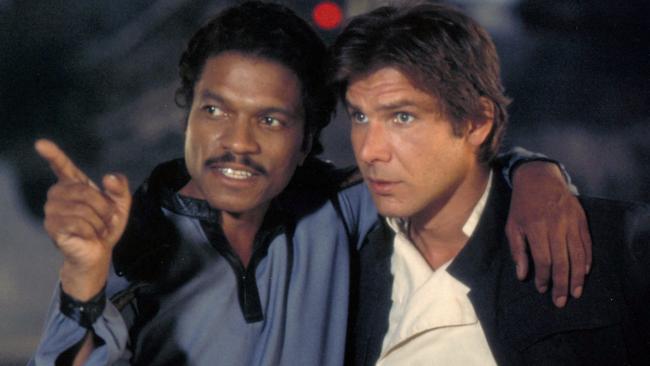Economist explains why destroying Death Stars was a very bad idea
THE Death Stars are gone, the Emperor killed — so where exactly did the First Order come from? This economist has an explanation.
Media
Don't miss out on the headlines from Media. Followed categories will be added to My News.
WHEN Lando Calrissian destroyed the second Death Star above the forest moon of Endor at the end of Return of the Jedi, he didn’t just free the galaxy from the iron grip of Emperor Palpatine.
According to one economics professor, he may have actually triggered a galaxy-wide financial collapse, sowing the seeds for the First Order to rise in the Empire’s place by the time of The Force Awakens.
In a tongue-in-cheek paper titled It’s a Trap: Emperor Palpatine’s Poison Pill, Washington University’s Zachary Feinstein models the financial repercussions of the destruction of two Death Stars and the dissolution of the galactic government.
By building a model of the galactic banking system, Feinstein calculates the total debt the banks would have been carrying from financing the two projects, concluding that the destruction of the Death Stars caused the Empire to default on its debts, triggering a banking crisis.
He reasons that the “scrappy underdog” Rebel Alliance simply did not have the money needed to bail out the banks — likely at least 20 per cent of gross galactic product. “Without such funds at the ready, it [is] likely the Galactic economy would enter an economic depression of astronomical proportions,” he writes.
Feinstein, 28, draws on the real-world examples such as the Manhattan Project to model the cost of the original Death Star ($US193 quintillion), the second Death Star ($US419 quintillion), and from there the total size of the galactic economy ($US92 sextillion over the 20-year period).
Feinstein then models the crisis following the destruction of the second Death Star and the death of the Emperor, using a number of assumptions, including that 50 per cent of the cost of the first Death Star had been paid off and that the Galactic Empire had no other debt outstanding.

“This is assuming that Emperor Palpatine was fiscally conservative and kept the overall debt load under control,” he writes.
All in all, he calculates the total losses from governmental bond defaults at $US515.5 quintillion. He also adds to that a 20 per cent drop in asset values due to the “terrorist attack”, based on similar experiences following the 9/11 attacks.
The second-year teacher said it was identical to the kind of analysis he used to model real crises. “It is real academic research,” he told The Wall Street Journal. “I could’ve looked at 1998, at the Asian crisis. Instead I looked at Star Wars.”
Emperor Palpatine, he theorises, relied on the Rebels recognising the “mutually assured destruction” that would follow should they destroy the Death Star, “to prove that the true power of the technological terror is from the power of economic terror unleashed in the case of its failing”.
“[That is], in case of the Rebel Alliance succeeding, an automatic financial attack on the entire Galaxy would be realised.”
However, Emperor Plapatine misjudged one point in his strategy: “The Rebel Alliance, while trusting in the power of the Force, never placed importance on long-term planning.”
Feinstein adds: “As General Han Solo of the Rebel Alliance, well-known for shooting first, once famously said, “Never tell me the odds”. As a high-ranking official, this viewpoint would have been widespread within the Rebel Alliance.
“Since mutually-assured destruction relies on both parties recognising it as such, and because the Rebels do not recognise it as such due to their own poor long-term thinking, Emperor Palpatine’s economic warfare strategy is an ineffective deterrent.”
Originally published as Economist explains why destroying Death Stars was a very bad idea



